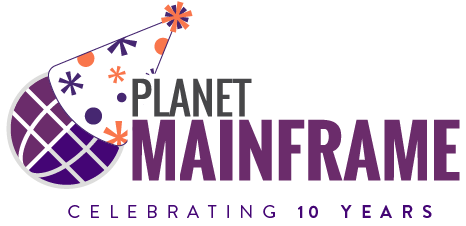Today’s modern data centers are composed of many different systems that works both independently and in conjunction with one another to deliver business services. The hardware, software, network resources, and services required for the operation and management of an enterprise IT environment is commonly referred to as your IT infrastructure.
The Challenge of Managing IT Infrastructure
It can be challenging for IT architects and executives to keep up with the burgeoning IT infrastructure. Homogeneous systems were common in the early days of computing, but most medium to large organizations today have adopted heterogeneous systems. For example, it is not uncommon for Linux, Unix and Windows servers to be deployed throughout a modern IT infrastructure. And for larger shops, add in mainframes, too.
And when multiple types of servers are deployed that impacts everything else. Different operating systems, software, and services are required for each type of server. Data, quite frequently, must be shared between the disparate applications running on different servers, which requires additional software, networking, and services to be deployed. The modern computing infrastructure is inherently complex.
Furthermore, technology is always changing – hopefully advancing – but definitely different than it was even just last year. Consider the database management system (DBMS). Most organizations have anywhere from three to ten different DBMSes. Just a decade ago it was a safe bet that most of them were SQL/relational, but with big data and mobile requirements many NoSQL database systems are being deployed. And NoSQL does not rely on an underlying model like relational, every NoSQL DBMS is different from every other NoSQL DBMS. And let’s not forget Hadoop, which is not a DBMS but can be used as a data persistence layer for unstructured data of all types and is frequently used to deploy data lakes.
Additionally, consider the impact of cloud computing – the storing and accessing of data and programs over the internet instead of your own servers. As organizations adopt cloud strategies components of their IT infrastructure will move from on-premises to the cloud. What used to reside in-house (whether at your organization or at an outsourced location), now requires a combination of in-house and external computing resources. This is a significant change.
Application delivery has changed significantly as well. Agile development methodologies combined with continuous delivery and DevOps enable application development to produce software in short cycles, with quicker turnaround times than ever before. With microservices and APIs software components developed by independent teams can be combined to interact and deliver business service more reliably and quicker than with traditional methodologies, such as the waterfall model. This means that not just the procured components of your IT infrastructure are changing, but your in-house developed applications are changing more rapidly than ever before, too.
And there is no end in sight as technology marches forward and your IT infrastructure morphs to adopt new and useful components. The end result is a modern, but more complex environment that is more difficult to understand, track, and manage. Nevertheless, few would dispute that it is imperative to keep up with modern developments to ensure that your company is achieving the best possible return on its IT investment.
But keeping track of it all can be daunting. It is easy to miss systems and components of your infrastructure as you work to understand and manage the cost and value of your technology assets. And, you cannot accurately understand the cost of your IT infrastructure, let alone be sure that you are protecting and optimizing it appropriately, if you do not know everything that you are using. In other words, without transparency there is anarchy and confusion.
IT Cost Transparency
The goal of IT must be to run it like a business, instead of as a cost center. It is often the case that senior executives view IT as a black box; they know it requires capital outlays but have no solid understanding as to where the money goes or how expenditures enable IT to deliver business value. On the other hand, it is not uncommon for senior IT managers to look at company expectations as unrealistic given budget and human resource constraints.
The problem is that there has been no automated, accurate method for managing and providing financial visibility into IT activities. Budget pressure and IT complexity, as discussed earlier, have conspired to make it more and more difficult to provide IT cost transparency.
But a new category of software is emerging that delivers cost transparency for IT organizations. The software offers automatic discovery of IT assets with the ability to provide cost details for each asset. By applying analytics to the IT infrastructure and cost data, the software can offer a clear picture of the cost of providing applications and services to your enterprise. This useful insight enables CIOs and other IT managers to make faster, fact-based decisions about provisioning and purchases.
The capabilities of such software can vary by vendor and solution, but capabilities to look for include:
- Automated collection of IT asset details
- Tracking of operational metrics and usage
- Cost modeling capabilities
- Executive and CIO dashboard
- Custom reporting and analysis
- Forecasting and budgeting
- Chargeback reporting and billing capabilities
- ROI analysis for IT projects
Armed with the facts provided by IT cost transparency, CIOs can accurately discuss budget allocations with business executives. When you understand your IT infrastructure and know what you spend on IT resources and applications, your company can make informed decisions because they know where the money is spent.
But IT cost transparency is not just a solution for improved communication. By using IT cost transparency software to model and track the total cost to deliver and maintain IT software and services, better decisions can be made. For example, infrastructure components like servers and storage arrays are frequently deployed with more power or capacity than is needed. Such, over-provisioning – whether it is CPU, memory, storage or any other IT asset – costs money and wastes resources. Over-provisioning is a problem for both mainframe and distributed systems. With mainframes you may have more MSU capacity or DASD than you currently need. Both can be costly in terms of software licensing fees, administration, and cost to manage. For distributed systems you may have many servers that are not running at peak capacity, meaning hardware that you paid for but are not using. And again, there is administration and management costs to factor in.
With an accurate view of what is being used, how it is being used, and what it costs, it becomes possible to provision capacity as needed. Not provisioning until necessary can significantly reduce costs, by delaying spending as well as taking advantage of Moore’s Law – or the tendency for capacity and performance to increase while cost decreases for technology over time. For mainframe systems, you can use soft-capping to decrease MSU usage, raising the cap as your capacity needs increase (or automate soft-capping with management software).
With an accurate view into your IT infrastructure and its cost it becomes easier to keep your IT and business initiatives on track. Armed with accurate data, your business and IT teams can better align investment with goals and therefore better manage budgets and spending. Cost transparency solutions provide decision-makers with knowledge of where money is actually being spent throughout the business. IT leaders can use this information to make accurate decisions about current allocations and future investments.
Chargeback for IT services has traditionally been troublesome for organizations with a complex IT infrastructure. How can you accurately charge for IT services when you may not know all of the services being delivered and on what components, let alone the actual cost of those services? IT cost transparency can be used to drive service-level agreements (SLAs) based on actual costs and requirements.
IT cost transparency can be a significant help for outsourced IT departments. An actual accounting of the real IT costs can help you to negotiate – ore re-negotiate – your outsourcing contract and bill.
The Bottom Line
Attempting to understand the cost of IT is too frequently a one-off effort conducted to address a crisis such as an audit, a contract negotiation or to define a new budget. A better approach is to understand your IT infrastructure and the cost of IT services and software with a proactive approach using automated IT cost transparency software. Let’s face it, we’ve been living with anarchy for too long and an informed, automated, analytical approach to managing IT costs is long overdue.








0 Comments